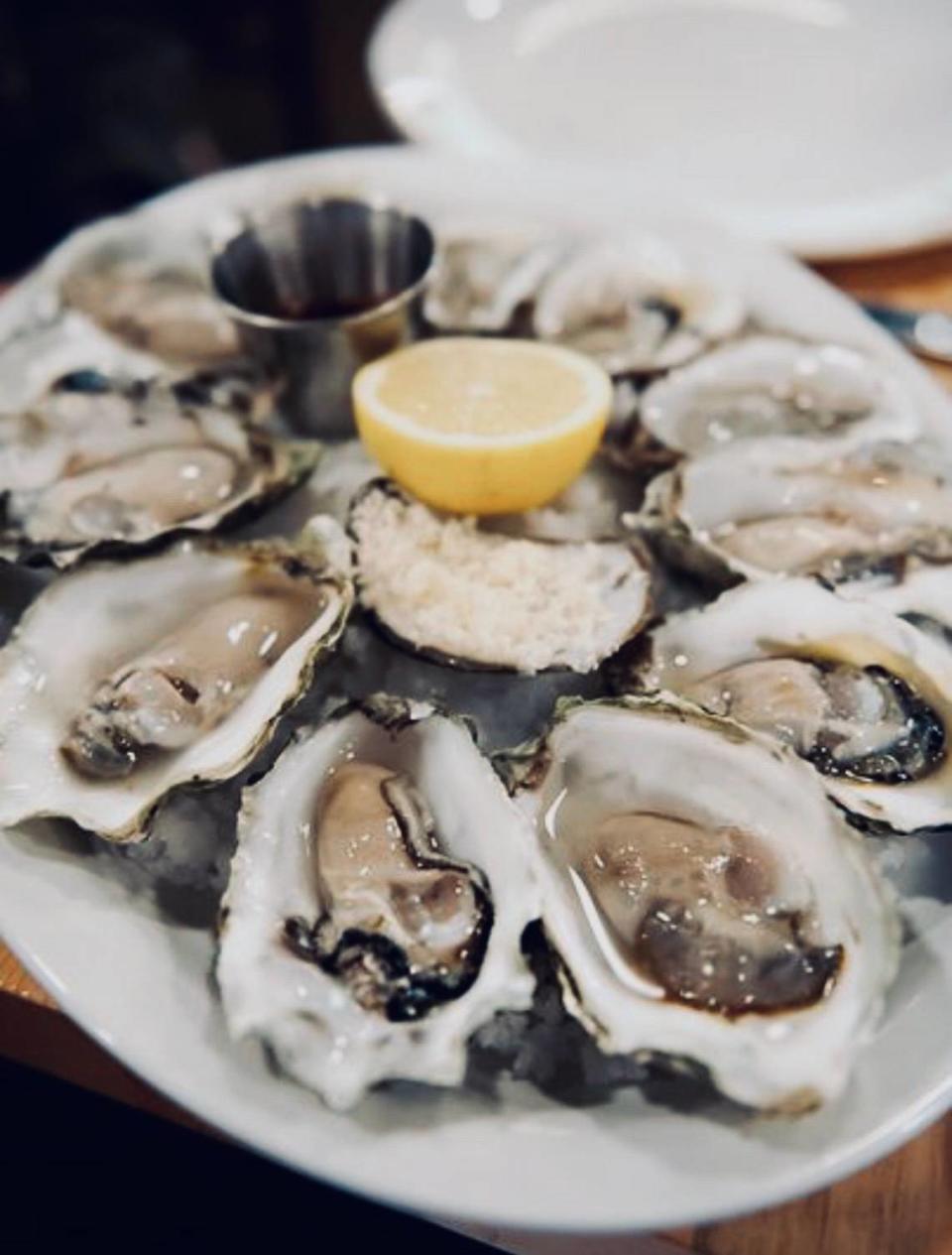Climate change may damage oyster habitat up and down California, researchers say
In California, the native Olympia oyster — nearly wiped out by over-harvesting at the beginning of the 1900s — and the widely farmed Pacific oyster both call coastal estuaries their home.
But the two species may soon be facing a housing crisis prompted by climate change, as new research originating from UC Davis and published in Limnology and Oceanography suggests their habitat may soon shrink, a threat that has implications for oysters grown on the Central Coast, across the state of California and beyond.
Researchers explored how coastal conditions affect oysters
Both Olympia and Pacific oysters survive in highly variable estuarine habitats — areas with a transitional “brackish” mix of fresh and salty water — while navigating a complex mix of environmental stressors.
Like any living thing, oysters thrive in an ideal set of conditions but start to suffer outside those boundaries.

Researchers wanted to understand how conditions in different parts of Tomales Bay and at different times of year affected how well both species of oysters grew and survived.
UC Davis environmental science and policy Professor Ted Grosholz led the study — funded by a California Sea Grant — with a team that included first author Jordan Hollarsmith, who is now a postdoctoral fellow at Vancouver’s Simon-Frasier University in Canada.
In a phone interview with The Tribune, Hollarsmith emphasized that although environmental influences on oysters are often studied in lab settings, it was “really important to take the experiment out to field, where everything is interacting, all impacting oysters at the same time.”
The team transplanted lab-reared Olympia and Pacific oysters in locations that varied in distance from the mouth of the bay, while measuring how well both species of oysters grew and survived.
They repeated this during the three distinct seasonal patterns California bays experience.
As a result of its Mediterranean climate, Hollarsmith said, California winters bring an influx of fresh water into estuaries, dry summers coincide with winds that upwell cold, acidic, and oxygen-deplete ocean waters toward shore, and early fall represents an in-between Indian summer-like period of calm and warmth, “where conditions are relatively stable.”

In both Olympia and Pacific oysters, growth slowed and more individuals died when they were closer to sources of summer upwelling, and this was amplified even more for oysters closer to pulses of freshwater introduced to the bay during the winter.
Multiple qualities of the water oysters were growing in — like temperature, salinity, oxygen levels and pH — were likely responsible for these negative impacts.
For examples, highly acidic water can make it hard for oysters to grow their shells, while high water temperatures can cook them in the same way that a heatwave earlier in the summer killed masses of mussels in Northern California.
Hollarsmith says this translates to an area of “really crucial Goldilocks conditions in middle of the bay,” where the balance of these factors were just right to support the healthiest oysters.
Changes are expected in the future
Current climate projections suggest “upwelling winds will likely get stronger and drive cold upwelled water deeper into bays for longer,” Hollarsmith said, while winter will bring more intense rainfall that brings larger pulses of fresh water into California estuaries.

What this means — according to Grosholz — is “the estuarine zone is shrinking due to climate change,” and oysters will continue to be “squeezed on both sides” by changes to ocean and river influences.
Or as Hollarsmith said: the “Goldilocks location gets a little narrower.”
Both Grosholz and Hollarsmith confirmed that these projections apply to not just Tomales Bay, but to estuaries along the entirety of California’s coast.
This can have significant consequences for both wild oysters that can’t relocate once they settle on the bay bottom as larvae, and for shellfish farming operations that are a treasured source of local seafood.

Oyster farmers tend their product on areas leased through the state, and because of the tangle of regulations and other barriers, they can’t easily or quickly relocate operations.
With further respect to shellfish farming, Grosholz also said that increasing water temperatures provides additional threats: “Bacteria and viruses go wild with higher temperatures.”
He pointed to the example of an oyster herpesvirus called OsHV-1 — a “new disease all commercial oyster farmers live in fear of.”
Shirley Baker, an invertebrate biology, ecology, and aquaculture professor at the University of Florida, was not involved with the study but said it “has important implications for the shellfish industry” even in other parts of the country and might give “insight into the inconsistent hatchery production of seed observed in the last few years” around the Gulf of Mexico after heavy rainfall and flooding events.
But when focusing the lens back to the local waters of the Central Coast, Hollarsmith said, “Morro Bay is also in place with pretty strong upwelling and the same intrusions of cold, low pH, low oxygen water” that affect Tomales Bay.
She said that the strengthening of those conditions through climate change “may have consequences for restoration and farming in the area.”

